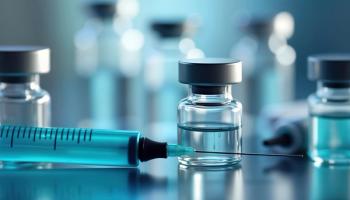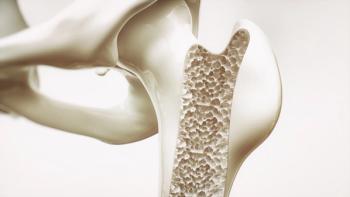
Three Ways One Health Plan Increased Biosimilar Uptake
Biosimilars hold great cost savings promises for payers and patients alike-but only if prescribers and patients are willing to make the switch.
There have been many articles
Kayla Hubrich, PharmD, clinical pharmacy specialist in gastroenterology and rheumatology and Lynsey Smith, PharmD, BCACP, clinical pharmacy specialist in rheumatology and dermatology, both at Kaiser Foundation Health Plan of the Northwest (KPNW), spoke at the recent AMCP Nexus about their plan’s efforts to increase biosimilar adoption.
They said that increased biosimilar use could lead to a $54 billion reduction in biologic spending from 2017 to 2026-resulting in lower premiums and out of pocket costs for patients, and a larger range of available therapeutic interventions previously restricted due to budget constraints for payers.
Interchangeable vs. biosimilar
One major hurdle for biosimilar adoption is due to FDA classifications, which require extra provider intervention.
Biosimilars, as defined by the FDA, are products that are highly similar and have no clinical difference to reference products. Because biosimilars are not exact copies of their reference products, changing from a reference product to a biosimilar requires provider approval.
Interchangeable products, on the other hand, are identical to a reference product and can be substituted for the reference product without prescriber involvement. However, there are currently no biologic products that meet this classification-and therefore all current biologic products require prescriber involvement to change.
Related:
Prescriber pushback
As Hubrich and Smith demonstrated, many physicians are hesitant to make the change to biosimilars.
One part of the problem is that only five biosimilars have launched. Many more are FDA-approved, but most are caught up in some sort of patent litigation. As a result, many prescribers have had little exposure to any kind of biosimilars.
In a 2015-
Overall, Smith said, physicians are unlikely to make the switch to biosimilars unless required to do so.
Patient issues
Another major hurdle is convincing patients that biosimilars are effective. Smith pointed to one study showing that while 70% of patients believe that generic medications are a better value, only 37% would prefer a generic to a brand medication.
According to Smith, patients are also wary of switching medications for nonmedical reasons. This wariness can cause additional problems. Smith and Hubrich both discussed the problem of potential so-called
A successful solution
KPNW wanted to require providers to make the switch from infliximab (Remicade) to its biosimilar infliximab-dyyb (Inflectra), and it was up to Smith and Hubrich to ensure a smooth and successful implementation. Here are some of the strategies they used:
1. Focus on educating providers. Smith and Hubrich realized that convincing providers was the best way to increase acceptance of biosimilars. Patients generally trust their providers, so convincing providers was also likely to convince patients.
Hubrich and Smith began their program with an education campaign aimed at providers. They tried to provide as much in-person education as possible to as many staff members as possible, targeting providers, infusion centers, and specialty clinic staff.
In particular, they stressed educating the nurses who actually administer the medication, as they would have the most contact with patients and would be able to alleviate any fears. They spent weeks addressing provider concerns and addressing questions, distributing research on biosimilar safety and efficacy.
2. Make it easy for providers to make changes. Hubrich and Smith added tools in the EHR for new patients to be switched to infliximab-dyyb immediately, and also added an internal Therapeutic Equivalency (TE) protocol agreement for patients who would be switching from the reference to the biosimilar. The TE protocol allowed a provider to select yes or no when entering in a prescription-and the vast majority opted to prescribe the biosimilar.
3. Ease patients’ fears. Patients who were switching medications were notified by letter two weeks before the change. Those letters gave notice of the change and were signed by the patient’s specialist, which was done purposefully to help ease fears. Concerned patients, as well as patients receiving copay assistance from the manufacturer, were directed to contact a hotline staffed by four pharmacists who could answer questions. This was done to take the burden off of prescribers to answer questions, as well as to track patients receiving copay assistance and aid them in obtaining that same assistance on their new medication.
Overall, the program switched 342 patients from infliximab to infliximab-dyyb. Of those patients, 22 reported adverse reactions-though many of those were non-specific, non-verified symptoms that Hubrich and Smith said could likely be attributed to the no-cebo effect. Nine of those patients (2.6%) went back to the reference product. Hubrich and Smith said that internal KPNW data show that around 5% to 8% of patients usually go back to a reference drug when switching, meaning that the switchback rate was not unexpected.
Smith and Hubrich attributed a large part of their success to their focus on patient and provider education, and stressed that similar conversions with other drugs and at other plans will need to account for those hurdles.
Newsletter
Get the latest industry news, event updates, and more from Managed healthcare Executive.



















































